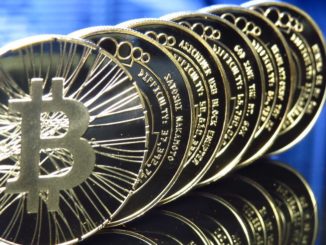
Michel wal (travail personnel (own work)), CC BY-SA 3.0, via Wikimedia Commons
Banking came up with its own methods of inflating the supply of legal tender-fiat money, fractional reserve lending. A bank comes to know (a version of the dispersal of knowledge of the market) how much of its depositors’ funds would be taken out of the bank on an average temporal basis; the funds not required or taken out by depositors were the reserves. These funds could be loaned out at interest, a concept many centuries older than the concept of money. That interest, set by and due to any lender, represents compensation to the lender for the loss of use of those funds for the duration of the loan, as well as an estimate of the loss of purchasing power of those principal funds due to inflation and the perceived risk that the funds will not be returned, plus an additional return on the principal judged reasonable profit by the lender to increase capital and enable further economic activity. Ongoing repayment of the principal and interest of these loans further secured the banks’ reserves; soon they “inflated” their reserves by maintaining only a certain percentage, or fraction, of the funds needed to cover the liabilities to the depositors. Occasionally the market would act in unplanned ways, and a particular bank—or all the banks of a particular nation—might be stressed by sudden calls to honor its obligations to most of its depositors. This is the classic “run on the bank”. If the bank or other financial institution were large enough in its issued obligations, national consequences could happen. In France 1720 John Law had sold too many shares of his Mississippi company without any underlying value in the enterprise and responded to a run on these shares with collapsing prices by also issuing new currency or livres to buy shares and support the share price. This first attempt at Keynesian supply-side “spending your way out of trouble” bankrupted the Mississippi company, John Law, and the French economy.
This and other such disasters drove governments to extend their controls and interventions with the invention of national central banks. Far easier to control one central entity that then controls/influences all other banking entities; nation-states now controlled state revenue (through taxation, fees, and inflation as well as sovereign borrowing), the main commodity of economic activity (the supply of money), and the directions that nation-state might believe served its best short- and long-term interests (Political Capitalism). These could all be quantified and studied, and Interventionist Capitalism became normal. Implicit in this complex arrangement was the assumption that a government’s treasury would never go bankrupt. Government could enact virtually unlimited benefits to its populace to retain and expand power without having to ever honor the expense truly. That last observation may be the key reason why central banks/national treasuries deem inflation at some low rate to be necessary; they must discount their debt repayment with fiat currency of lesser future value. Hayek wrote “The curious task of economics is to demonstrate to men how little they really know about what they imagine they can design.” As may be argued, that desperate need to discount unmeetable obligations by debasing the fiat currency and endlessly expanding liabilities unanchored in real assets may paint all such “economies” into an inescapable corner despite their best designs.
© Nik Bednarski, M.D. 2023



